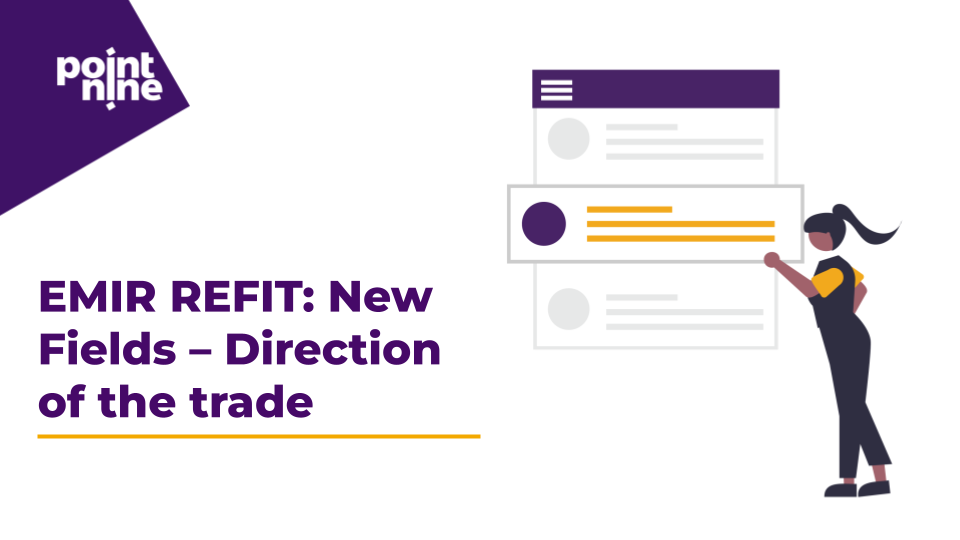In the last decade, the European financial market has seen drastic changes, specifically regarding the regulation of the post-trade market. After the most recent economic recession in 2007—2008, it became clear to the European Trade Commission (ETC), that trade reform was necessary. Prior to this, investment firms, banks, and other financial organisations were not required to report any data related to post-trade transactions or contracts.
In an attempt to regulate over-the-counter (OTC) derivatives and trade repositories (TR), the ETC drafted and enforced the European Market Infrastructure Regulation (EMIR). But what exactly is EMIR and what does it mean for European-based TRs, banks, and other firms?
In this article, we will provide a brief overview of EMIR.
What is EMIR?
EMIR is a system of regulations that include reporting requirements to serve as a set of operational risk management standards. These requirements apply to derivative contracts and post-trade-related transactions. These regulations also established rules specifically for central counterparties (CCPs) and TRs.
The purpose of the introduction and enforcement of EMIR is to increase transparency in the European post-trade processes and market, as well as reduce systemic counterparty and operational risks by regulating OTC derivatives. The overarching goal of EMIR is to improve operations, reduce financial risks, and increase visibility to prevent future financial system turmoil.
EMIR was originally adopted by the ETC back in July 2012 and went into force in August 2012. The ETC adopted technical standards in December 2012, and went into effect in March 2013. The primary rules that were proposed included the following:
- All standardised OTC derivatives should be traded on exchanges or where available via electronic delivery methods
- All standardised OTC derivatives should be cleared through CCPs.
- Both OTC derivative contracts and listed derivatives should be reported to TRs.
- Non-centrally cleared derivatives contracts should be subject to higher capital requirements.
What Does EMIR Reporting Look Like?
As we outlined above, under the EMIR regulations, all OTC derivatives must meet strict reporting requirements, which means that all derivatives’ transactions and contracts must be reported and submitted to their respective TRs.
Additionally, under the EMIR regulations, The European Securities and Markets Authority (ESMA) is appointed to oversee all TRs, requiring them to submit any and all transaction-related information for review, set and define technical standards, conduct investigations, and take measures as required for TRs that do not adhere to specific reporting requirements.
These reports must include the following information:
- A Unique Transaction Identifier (UTI)
- A legal entity identifier (LEI)
- Information on the trading capacity of the counterparty
- The marked-to-market valuation of the position
Additionally, part of ESMA’s role is to also serve as a resource for CCPs, TRs, and other entities. For example, in July 2019, ESMA updated their FAQs specifically related to EMIR.
How Does EMIR Impact CCPs, TRs, and Other Organisations?
Since February 2014, ESMA has been focused on improving the overall quality of data submitted by CCPs and TRs. However, much of this responsibility falls on CCPs and TRs’ shoulders.
Here are some ways that EMIR has impacted these entities:
Strict Reporting. Since the enforcement of EMIR, ESMA has released different levels of reporting requirements. The first level only required reporting on 85 data fields. However, the second level increased the number of fields from 85 to 129. Some of the original required fields have since been retired, however, other fields and values have been modified.
As a result, this has put a great deal of pressure on organisations to adopt software or technology, establish processes, or work with an external partner to help them put the necessary systems in place to submit accurate reports.
Reporting Submissions. By following the EMIR reporting requirements, financial organisations and firms must implement and adapt to new processes and operations. In many cases, this has required adopting additional resources, such as technology and staff.
Required Authorisation. Although banks, investment firms, and TRs now have strict reporting requirements, EMIR does allow for these entities to delegate or outsource reporting to third parties.
However, any firm that wants to offer CCP services to other entities must first seek proper authorisation from ESMA. To do this, ESMA has published regulatory technical standards for firms to review and comply with prior to seeking authorisation to offer clearing services.
The Introduction and Enforcement of EMIR: Timeline and Next Steps
Even though the introduction and enforcement of EMIR is still in its infancy stages, it has already drastically changed how companies, investment firms, banks, counterparties, and trade repositories operate and report transaction data.
So, what are the next steps? As we look ahead at the EMIR enforcement timeline, CCPs will be required to provide clearing members with an example model or tool. This model or tool will be designed to help CCPs to determine the appropriate initial margin required when clearing new transactions. This requirement is scheduled to go into force by the end of 2019 (December 18th, 2019).
By June 2020, FCs will be responsible for reporting all details of OTC derivatives contracts on behalf of NFCs. This applies to those that do not exceed clearing thresholds.
Finally, by June 2021, clearing members that provide clearing services to other entities will be required to provide these services under fair, reasonable, non-discriminatory, and transparent commercial terms, as approved and authorised by ESMA.
Many experts believe that the enforcement of EMIR would further hinder the European market from growth and improvement. However, it is clear that the enforcement of EMIR not only ensures increased transparency and visibility into post-trade market transactions, it has also forced many entities to adopt processes and operate differently.





